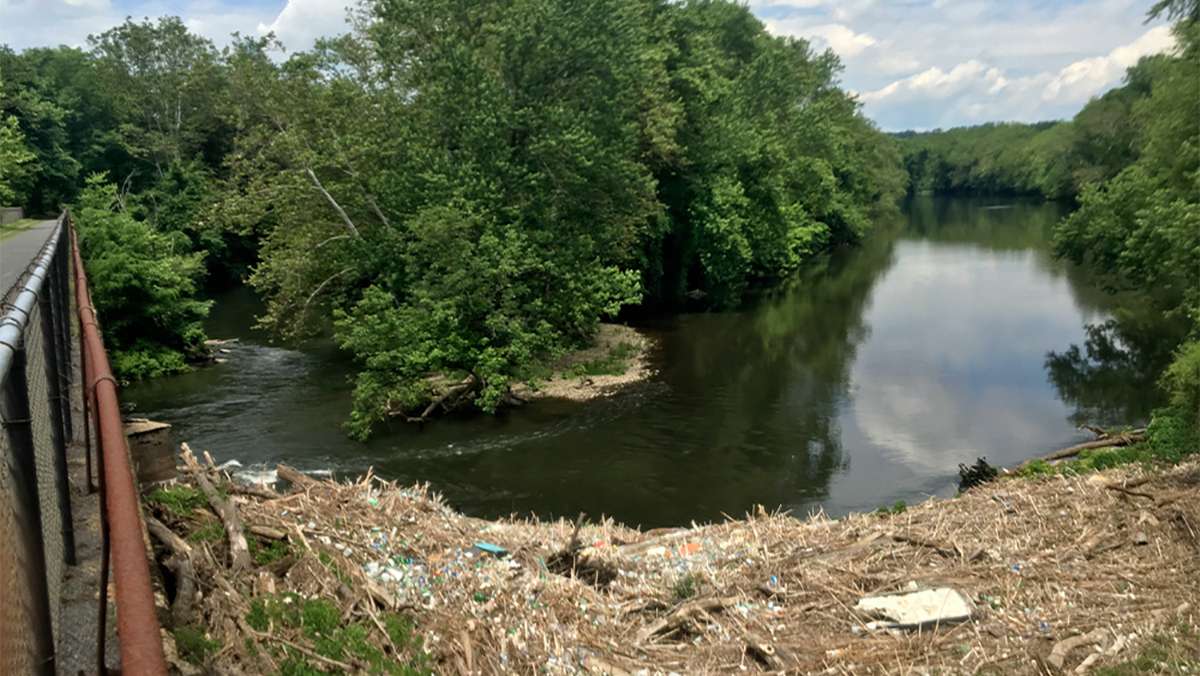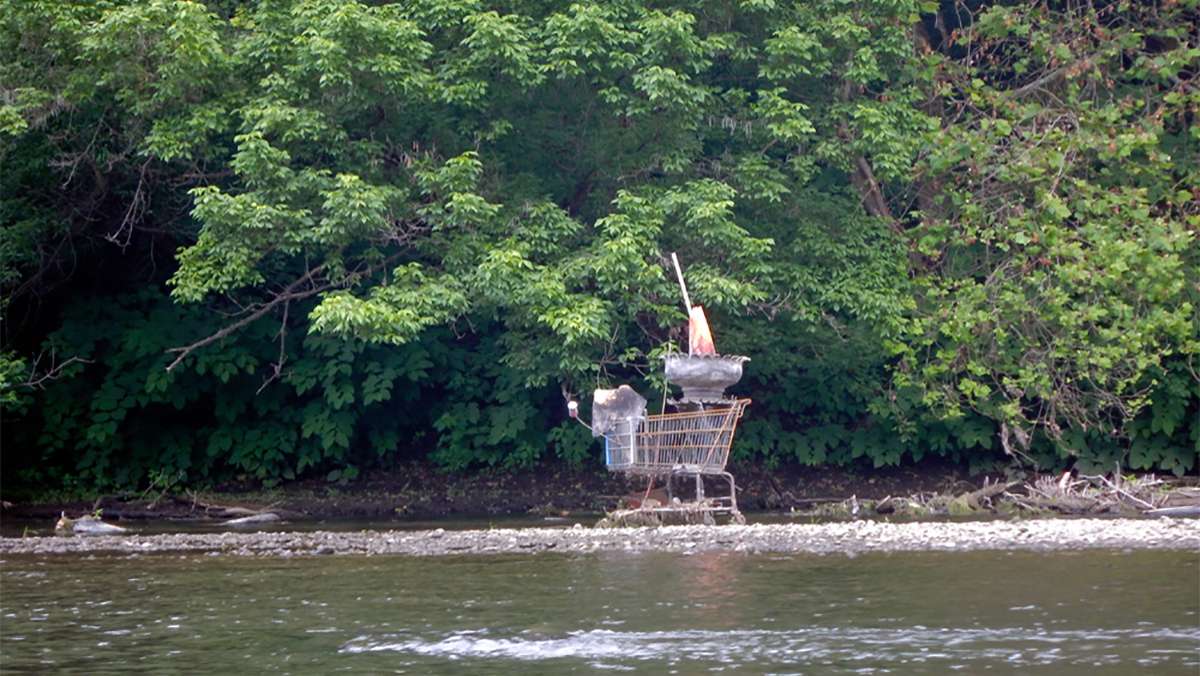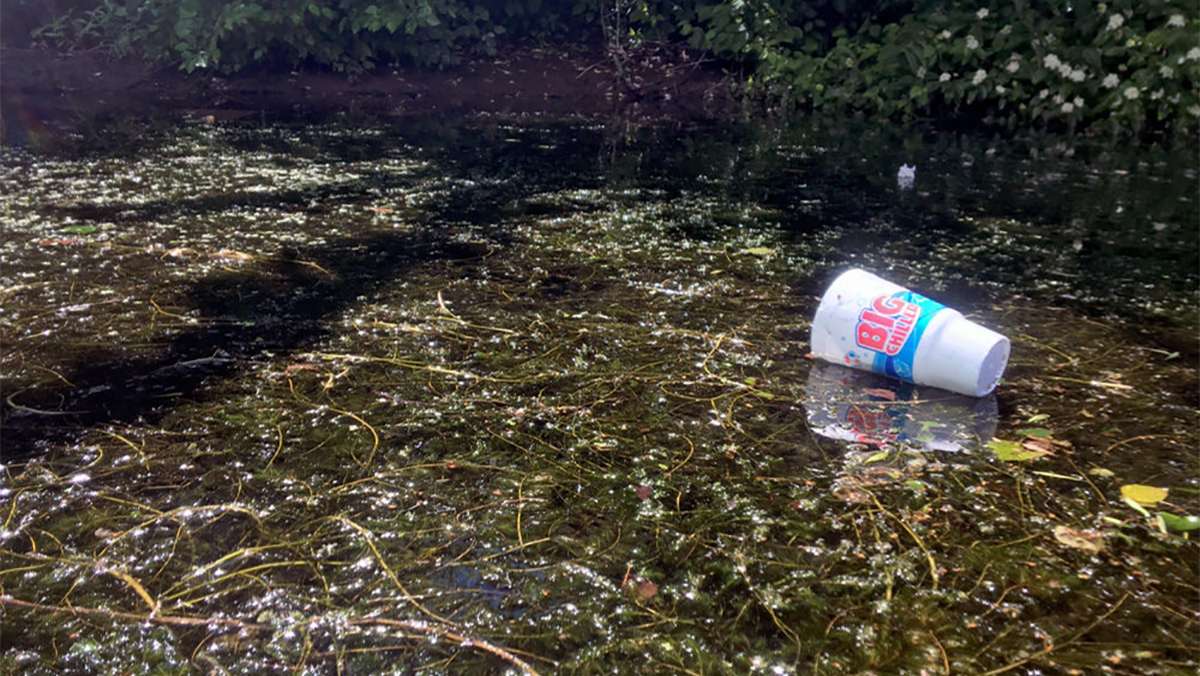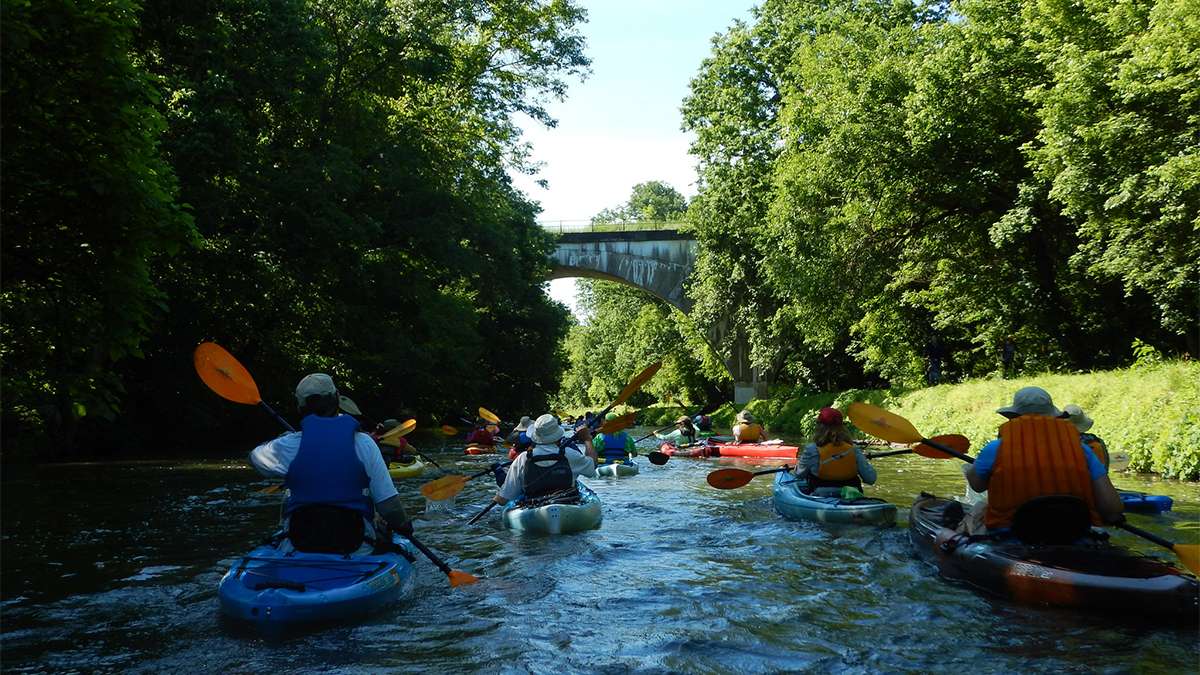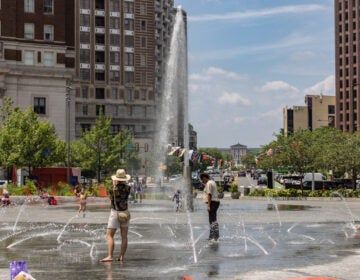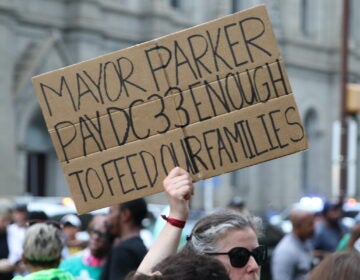Environmental group maps schlock on the Schuylkill
An orange traffic cone sits in a bird bath, which in turn rests in a rusty shopping cart.
This not an avant garde art project – it’s a pile of trash on the banks of the Schuylkill River.
A photo of that compelling pile of junk is part of an effort to chronicle the trash that finds its way into the river and starting convincing us to knock it off.
The Schuylkill – a Dutch name meaning “hidden river” – bends and flows through 135 miles of Southeastern Pennsylvania. Along way, it picks up a lot of rubbish. Street trash washed down storm drains ends up in the waterway, as does larger trash dumped there directly.
Each spring, a coalition of environmental groups called the Schuylkill Action Network (SAN) combs the river and its banks for litter.
“We’ve been doing that for six years,” said Virginia Vassalotti, a partnership specialist with SAN. “This year we wanted to do something more, not just clean up the litter after it’s already there. [We’d like to] try and figure out ways we can prevent litter from entering our waterways.”
That meant reaching a lot more people, so to make a bigger splash, SAN made local photographer, Hidden City editor and trash aficionado Bradley Maule, an offer he couldn’t “refuse” – recording trash hot spots during the annual Schuylkill Sojourn, a week-long paddling trip from Schuylkill Haven, Schuylkill County to Boathouse Row in Philadelphia.
“This opportunity fell in my lap and I was like, ‘Wow, I would be a fool not to do this’,” said Maule, who regularly cleans trash out of the Wissahickon Park. He’s even taken some of the trash collected and turned it into art.
Maule set off, along with other participants in the Sojourn, armed with a GPS-enabled camera. Along the way, he took pictures of trash circling in eddies and trapped behind dams. Their locations synced to an interactive online map.
In many cases, the locations of biggest trash heaps were not surprising, said Vassalotti.
“It’s telling us that it’s mostly from larger populated areas, Pottstown, Reading, Philadelphia,” she said. “I was actually surprised to see the river was cleaner than I expected.”
The most common offender was the lowly single-use water bottle. Armed with that information, SAN plans on doing educational campaigns in the most litter-prone areas, encouraging people to use fewer plastic bags and bottles.
“The idea is really to get people to think about where it comes from,” said Maule.
WHYY is your source for fact-based, in-depth journalism and information. As a nonprofit organization, we rely on financial support from readers like you. Please give today.



